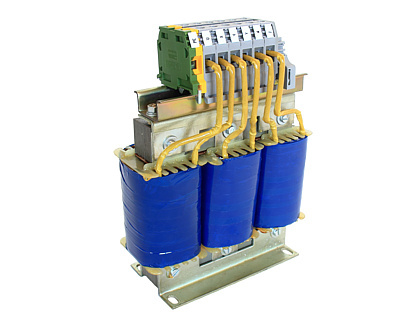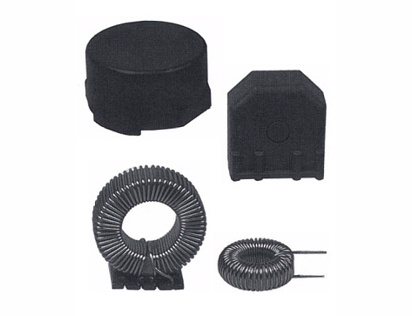

Chokes are used to provide an inductive resistance and since they can be matched to practically all requirements they have a correspondingly wide field of application. Chokes can be overloaded to a high degree for short periods provided they can cool adequately afterwards. When used as current limiters the value for overload and short-circuit protection must be carefully selected because chokes can, for example, restrict short-circuit currents to such an extent that short-circuit instantaneous releases do not operate. A thermocontact integrated in the choke with subsequent disconnection would in this case provide protection against overloading.
However, ambient temperatures above 40°C and installation altitudes of more than 1000 m above sea level mean that less power can be drawn.
Chokes generate distinctive stray fields. Care should therefore be taken when installing them to ensure firstly that these stray fields are not bridged and secondly that there is no heating of adjacent components. Chokes are generally designated according to the application. For example:
Smoothing chokes reduce the current ripple in the output of rectifier circuits and act as a magnetic energy store whose size is determined by the energy content.
Energy content W = 0,5 x L x I²
L= Inductance of the smoothing choke in H
I = Arithmetic mean value of the direct current in A
Commutation chokes limit short-circuit currents which occur in rectifiers during current transfer between semiconductors. The size of commutation chokes is dictated by
| Rated voltage in V Impedance voltage in % of the rated voltage Rated current in A |
Starting chokes limit the starting current of electric motors and are designed for short-time operation. Taps are provided for multi-stage starting. The size of starting chokes is defined in kW according to the motor power.
Naturally we also make chokes for other applications, for example
| Filter chokes Resonant frequency chokes, etc. |
and other types of construction, e. g.
| Air-core chokes Toroidal chokes, etc. |




| UA | Output voltage |
| UV | Voltage loss at the diode and the storage choke |
| IA | Output current |
| ∆IA | Residual ripple of the choke output current |
| f | Pulse frequency of the switched-mode power supply |
| Vmin | Minimum pulse duty factor |

